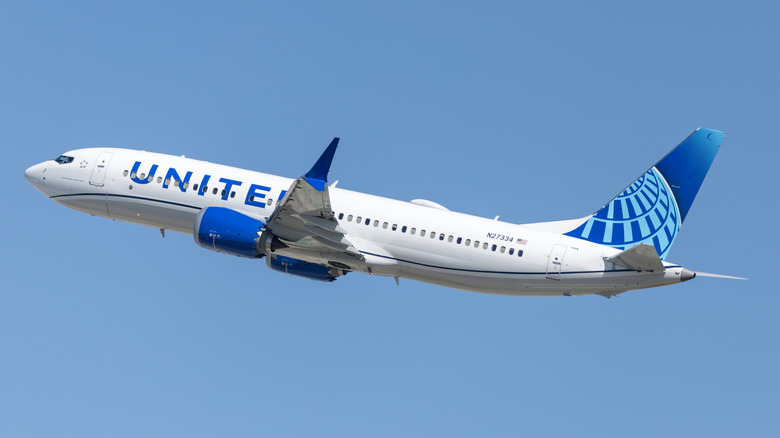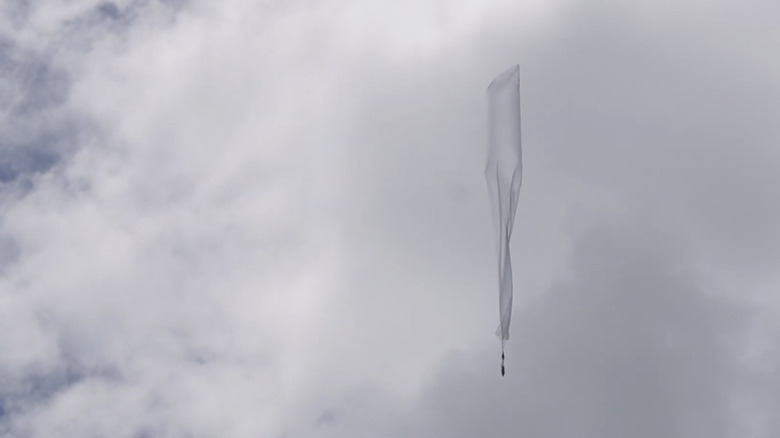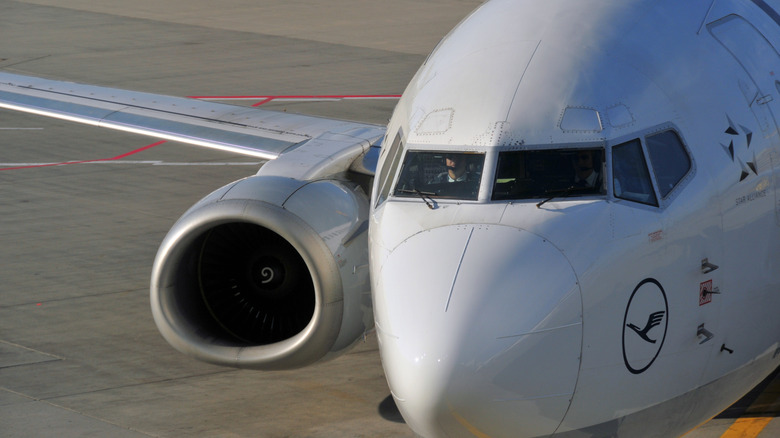Did This United Airlines Flight Really Get Slammed By Space Debris?
There have been a number of high profile incidents involving commercial planes in 2025, beginning with the collision between an American Airlines jet and a U.S. Army helicopter in Washington, DC and the crash of an Air India flight shortly after take-off. Only one person survived the crash in India, while all involved in the DC crash perished. Luckily, another incident in October had a happier ending. United Airlines flight 1093, which was on its way to Los Angeles from Denver, diverted to Salt Lake City for an emergency landing after its windshield cracked mid-flight. Initial reports theorized that the plane may have hit "space debris" — a small meteorite? A piece of a defunct satellite? No one seemed sure.
The Boeing 737 MAX 8 was flying at around 36,000 feet when the damage occurred, with 134 passengers and six crew members on board. After the plane safely landed with no injuries to passengers, the National Transportation Safety Board (NTSB) began its investigation, looking not only at the cracked windshield, but also taking into account weather, radar, and flight recorder data.
Despite early reports, space debris seemed unlikely. A 2023 report from the Federal Aviation Administration (FAA) found that the odds of an aircraft collision with space debris causing injury to passengers as below a trillion to one. A few days after the incident, additional news reports provided more clarity. John Dean, co-founder and CEO of a company called Windborne Systems, believes the plane may have hit one of its weather balloons.
Who is Windborne, and what happened?
Windborne operates long-duration balloons, working under a mission to "help humanity mitigate and manage the most immediately destructive aspects of climate change." It combines the data gathered by its balloons with AI models to provide weather forecasts. According to a statement released by the company, its balloons only weigh 2.4 pounds at launch and are designed "to be safe in the event of a midair collision." Windborne files aviation alerts called NOTAMs for every balloon it launches. It is working with both the NTSB and the FAA to investigate the incident.
Cockpit windshields in commercial aircraft are thoughtfully designed and typically made of several layers capable of withstanding pressure changes and risks like bird strikes. News of the United Airlines flight 1093 incident reported a badly cracked windshield and scorch marks, and one pilot sustained minor injuries to his arm.
Windborne, which deemed "this level of plane collision damage to be unacceptable," has already implemented changes in the aftermath of the incident. It is minimizing the time its balloons spend between 30,000 and 40,000 feet, and has accelerated plans to use live flight data in order to avoid planes. Finally, the company is at work on new hardware designs that would lessen the impact of the balloon with any other object.
Similar accidents in the past
The cracked windshield on Flight 1093 is not an isolated incident. It's happened before, sometimes with more dire consequences. In 2007, Denver International Airport was forced to investigate after the windshields on at least 13 planes cracked, some during take-off and landing. The cause was later determined to be foreign object debris due to a storm. In 2013, a Boeing 757 heading to Boston landed after cracks formed, and a Boeing 767-300 enroute to LA in 2014 was at 38,000 feet when it suffered a cracked windshield and was forced to make an emergency landing.
No one was injured in these incidents, but the same was not true on a British Airways flight in 1990. Flight 5390 was on its way to Spain when one of the panels of the windshield blew out and one of the pilots was forced from his seat and partially out of the window. The flight crew held him for 20 minutes until the plane landed and, though injured, he miraculously survived.
If you're worried, don't be. With tens of thousands of planes in the air every day, incidents of cracked windows are extremely rare. Commercial pilots are also extremely well-trained to handle emergency situations and extreme weather, and can even land with limited visibility using only the plane's instruments.


